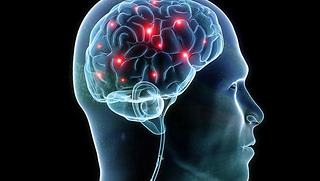Simulation

Simulation is a method of active learning, which is based on the imitation of reality in order to gain experience similar to the real one. Richard Duke writes that this "educational technique - the view that a game is a classroom technique, the modern equivalent of colored paper and paste". He also underlines that simulation is "correlation with societal process - an emphasis on role-playing and on the duplication of social interaction" (Duke 1974, p. xiii). In this way, the author of Gaming - the Future's Learning highlights the link with simulation of life science in society. This demonstration, which can be described as a miniature picture of reality, or rather a model of social, political or economic processes. Like the gaming simulation it consists of three components: the game having certain rules of conduct; a role which participants undertake, and simulation. The purpose of the simulation is to show the process from beginning to end. But what differentiates simulation from a simulation game is that its sole purpose is to enhance the students' ability to interact, negotiate and reach a compromise. Simulation is, first and foremost science communication. Duke notes that "the simulation is defined as a (...) communication mode and Future's Language which combines a game-specific language and Communications Technologies Appropriate multilogue interaction with the pattern" (Duke 1974, p. 55). It is therefore an interactive, holistic model of communication.
.Learning through simulation takes place in the process of "learning by doing" and learning from the mistakes made in a safe-simulation setting. Since the turn of the sixties and seventies, theorists - such as Omar Khayyam Moore and Alan Ross Anderson (Moore, Anderson 1969, p. 585) point out the pros of applying simulation as a method. They note that the simulation is based on providing "environment for learning" And is this environment, from one hand more productive if it permits and facilitates the taking of more perspectives toward the issue than another environment ". In addition, "This implies the ability of the learner or make it deduce probable inference within the context of the educational environment. This rewires an environment which is logically and coherently structures, permitting the learner to make leaps of faith that some other perspective or level of thought ". Simulation method teaches productive thinking and allows you to break the conventional thinking. An important element is learning to solve problems. It is not just the acquisition of knowledge, but also the ability to learn new skills and learning attitudes, develop observation, imagination and memory, and teaches concentration. Furthermore, the simulation stimulates motivation of the participants. Learning is more effective and longer lasting knowledge. Simulation combines theory with practice, favoring the latter. Simulation as a teaching method is increasingly used in education. It is mostly applied in the teaching of early education, but can also be successfully applied at higher levels of education.
Project Coordinators:
dr Kinga Anna Gajda
mgr Aneta Pazik
Partial research results were presented at the following conference:
END 2015 International Conference on Education and New Developments (Porto, 27-29.06.2015)
The method was used in the following projects:
- E-voting a partycypacja wyborcza (dr K.A.Gajda, mgr A. Pazik)
- Zdzisław Krudzielski jako architekt industrialnej i społecznej rzeczywistości jaworzańskiej (dr K.A.Gajda, mgr A. Pazik)
- Sądecki Sztetl Młodzi Ambasadorzy Tolerancji (Fundacja Nomina Rosae - – projekt odbył się w ramach programu Obywatele dla Demokracji, finansowanego z Funduszy EOG
Fot. Allan Ajifo pobrane z Flickr Credit to Modafinil